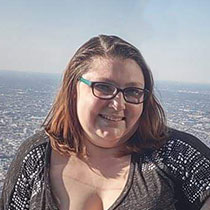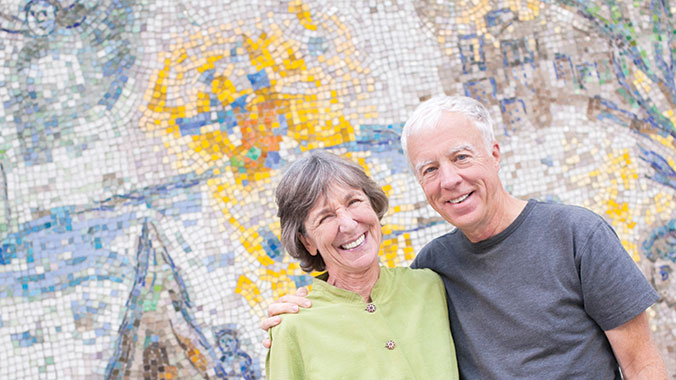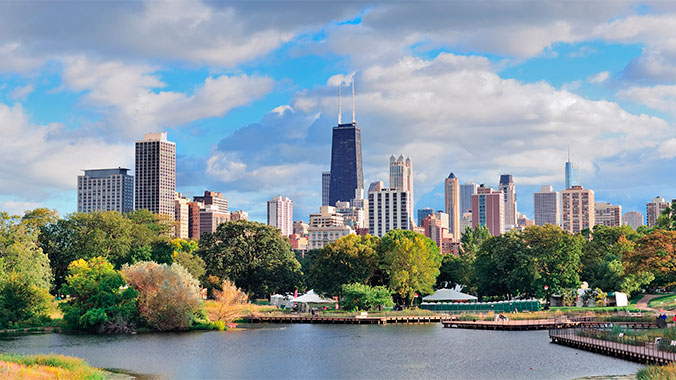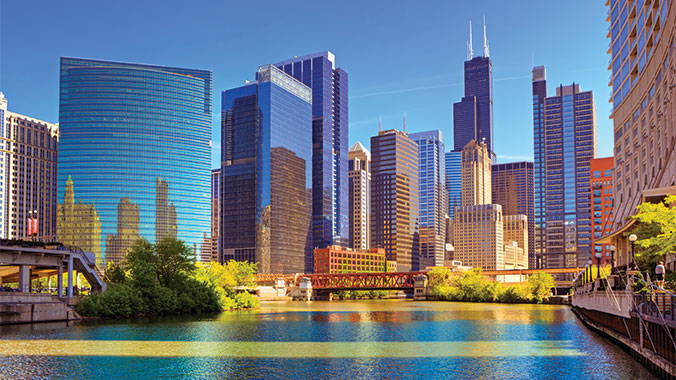AIA Guide to Chicago
by American Institute of Architects Chicago Alice Sinkevitch and Laurie Peterson
Chicago’s architecture attracts visitors from around the globe. The fourth edition of the AIA Guide to Chicago is the best portable resource for exploring this most breathtaking and dynamic of cityscapes. The editors offer entries on new destinations like the Riverwalk, the St. Regis Chicago, and The 606 as well as updated descriptions of Willis Tower and other refreshed landmarks. Thirty-four maps and over 500 photos make it easy to find each of the almost 2000 featured sites. A special insert, new to this edition, showcases the variety of Chicago architecture with over 80 full-color images arranged chronologically. A comprehensive index organizes entries by name and architect.
Art in Chicago: A History from the Fire to Now
by Maggie Taft (editor), Robert Cozzolino (editor)
Art in Chicago is a magisterial account of the long history of Chicago art, from the rupture of the Great Fire in 1871 to the present, Manierre Dawson, László Moholy-Nagy, and Ivan Albright to Chris Ware, Anne Wilson, and Theaster Gates. The first single-volume history of art and artists in Chicago, the book—in recognition of the complexity of the story it tells—doesn’t follow a single continuous trajectory. Rather, it presents an overlapping sequence of interrelated narratives that together tell a full and nuanced, yet wholly accessible history of visual art in the city.
Chicago Skyscrapers, 1871 – 1934
by Thomas Leslie
A detailed tour, inside and out, of Chicago's distinctive towers from an earlier age. Thomas Leslie reveals the daily struggles, technical breakthroughs, and negotiations that produced these magnificent buildings. He also considers how the city's infamous political climate contributed to its architecture, as building and zoning codes were often disputed by shifting networks of rivals, labor unions, professional organizations, and municipal bodies.
Chicago: Growth of a Metropolis
by Harold M. Mayer & Richard C. Wade
This volume, which comprises over 1,000 pictures and 50 maps, tries to do more than show physical development—it attempts to suggest how the city expanded and why it looks the way it does. Because it asks different questions, this book differs markedly from other "pictorial histories" of American cities. Instead of emphasizing society and customs, this volume deals with the physical conditions of life. In place of the conventional interest in "founding fathers" and leading families, it is more concerned with street scenes and ordinary people. Without neglecting downtown, it also reaches into the residential areas and neighborhood shopping centers. Moreover, this volume is concerned with suburbs and "satellite" towns as well as the historic city.
Compliments of Chicagohoodz: Chicago Street Gang Art & Culture
by James “Jinx” O’Connor & Damen “Mr. C.” Corrado
Based on the original Chicago gang research website, Compliments of Chicagohoodz analyzes the unique visual language and graphics of the city's street gangs, drawing upon decades of research, interviews, documentation and collecting of memorabilia, and featuring commentary from gang members (including artists Robert N. Taylor and Jack Walls).
Constructing Chicago
by Danciel Bluestone
Traces the architectural history of nineteenth century Chicago, looks at Chicago's parks, churches, offices, and civic buildings, and looks at the image of Chicago they created.
Liquid Capital: Making the Chicago Waterfront
by Josh Salzmann
In the nineteenth century, politicians transformed a disease-infested bog on the southwestern shore of Lake Michigan into an intensively managed waterscape supporting the life and economy of Chicago, now America's third-most populous city. In Liquid Capital, Joshua A. T. Salzmann shows how, through a combination of entrepreneurship, civic spirit, and bareknuckle politics, the Chicago waterfront became a hub of economic and cultural activity while also the site of many of the nation's precedent-setting decisions about public land use and environmental protection. Through the political saga of waterfront development, Salzmann illuminates Chicago's seemingly paradoxical position as both a paragon of buccaneering capitalism and assertive state power.
Paintings at the Art Institute of Chicago: Highlights of the Collection
by James Rondeau
The Art Institute of Chicago, one of the most beloved and important museums in the world, houses an extraordinary collection of objects from diverse places, cultures, and time periods. This beautiful catalogue opens the doors of the museum to readers, presenting an expansive selection of painted works from around the globe, introduced insightfully by James Rondeau, president and director of the Art Institute. New color photography accompanies entries written by a team of curators, art historians, and educators, which put the works into context. The book showcases a dazzling range of paintings, including an Egyptian funeral portrait, an ancient Mexican wall mural, Chinese scroll paintings, Japanese painted screens, and works by artists such as Caillebotte, Cassatt, El Greco, Gauguin, Homer, Hopper, Johns, Lichtenstein, Matisse, Mitsuoki, Monet, Morisot, Motley, O’Keeffe, Picasso, Pollock, Rembrandt, Richter, Rubens, Sargent, Seurat, Tiepolo, Turner, Van Gogh, Warhol, Whistler, and Wood; contemporary artists featured include Kerry James Marshall, Wanda Pimentel, and Kazuo Shiraga.
Plan of Chicago
by Daniel H. Burnham and Edward H. Bennett
This meticulous reprint of the Plan of Chicago reproduces all 142 plates from the original, 48 of which are in color. It also contains a color plate of the City Hall that was omitted from the 1909 edition. A new introduction by Kristen Schaffer details those parts of Burnham's draft that were excluded from the published book. The most visible document of the City Beautiful movement, this reprint still holds valuable lessons for today's architects and planners.
The Chicago River: A Natural and Unnatural History
by Libby Hill
This widely acclaimed volume weaves the perspectives of science, engineering, commerce, politics, economics, and the natural world into a chronicle of the river from its earliest geologic history through its repeated adaptations to the city that grew up around it. While explaining the river’s role in massive public works, such as drainage and straightening, designed to address the infrastructure needs of a growing population, Hill focuses on the synergy between the river and the people of greater Chicago, whether they be the tribal cultures that occupied the land after glacial retreat, the first European inhabitants, or more recent residents.
The House on Mango Street
by Sandra Cisneros
The House on Mango Street is one of the most cherished novels of the last fifty years. Readers from all walks of life have fallen for the voice of Esperanza Cordero, growing up in Chicago and inventing for herself who and what she will become. “In English my name means hope,” she says. “In Spanish it means too many letters. It means sadness, it means waiting."
The Loop: The “L” tracks That Shaped and Saved Chicago
by Patrick R. Reardon
This unique volume combines urban history, biography, engineering, architecture, transportation, culture, and politics to explore the elevated Loop’s impact on the city’s development and economy and on the way Chicagoans see themselves. The Loop rooted Chicago’s downtown in a way unknown in other cities, and it protected that area—and the city itself—from the full effects of suburbanization during the second half of the twentieth century. Masses of data underlie new insights into what has made Chicago’s downtown, and the city as a whole, tick.
They Built Chicago: Entrepreneurs Who Shaped a Great City’s Architecture
by Miles Berger
A story of the development of Chicago. This story is engaging and encompassing; organized into four major periods, spanning more than 150 years of Chicago history: 1830 to 1879, 1880 to 1899, 1900 to 1929, and the years from the end of WWII to the present. Loaded with maps and black and white photos.













